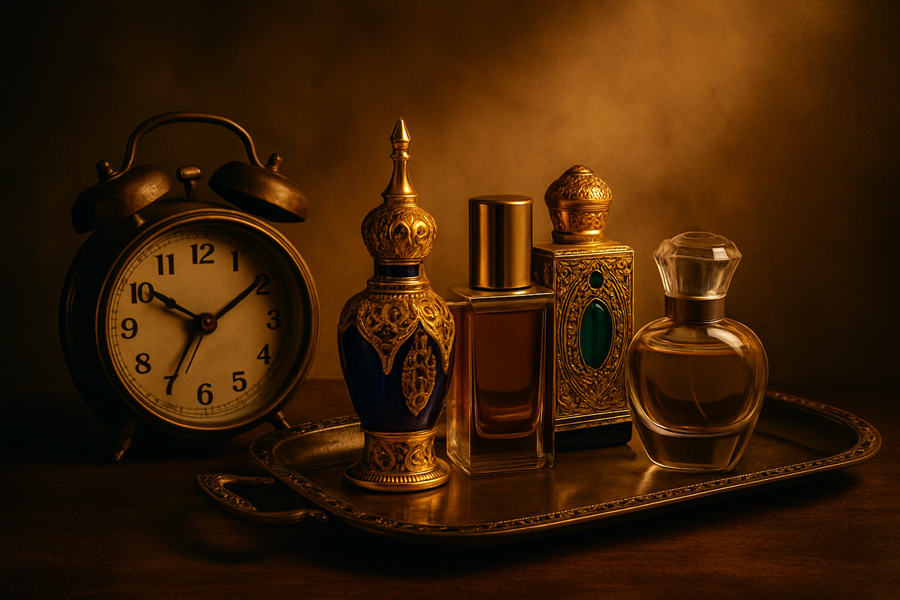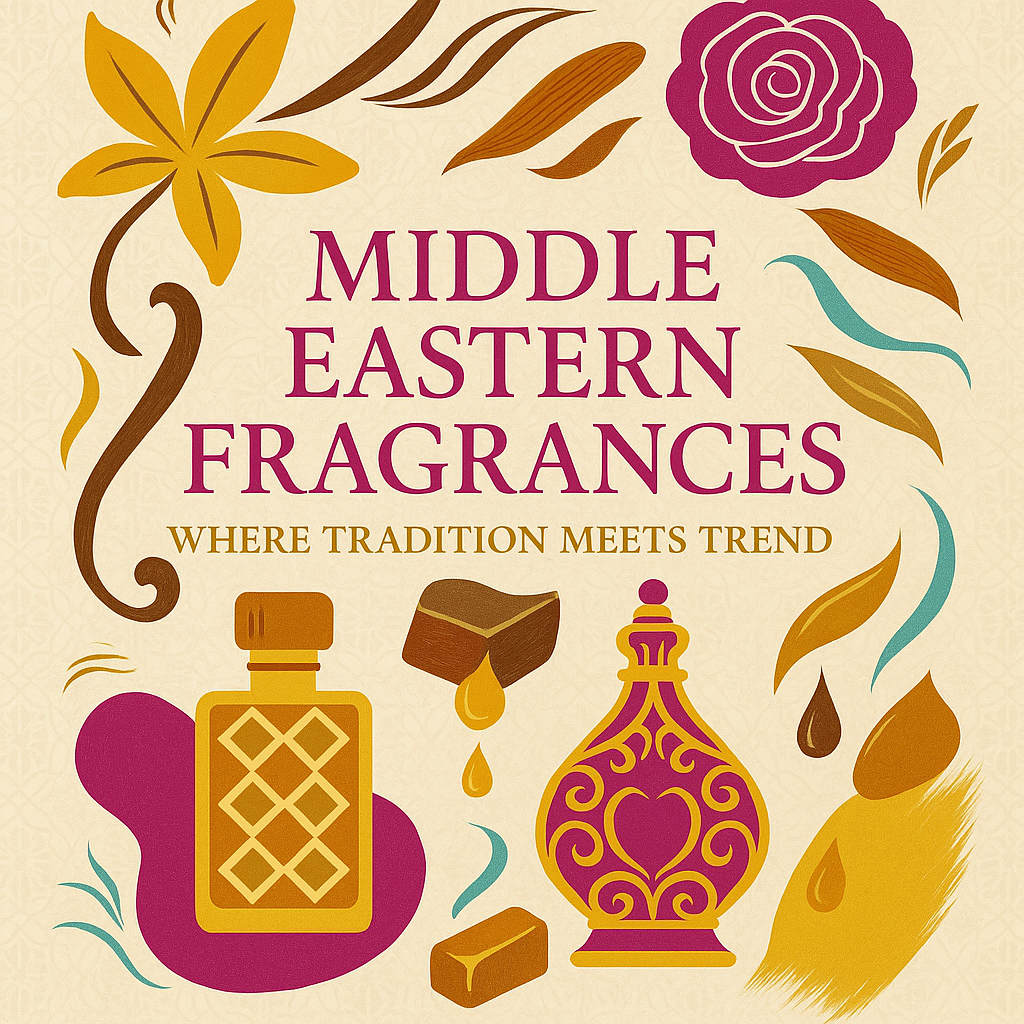
Why Fragrance Lovers Are Letting Perfumes ‘Rest’ Before Wearing Them
In the world of fragrance, time isn’t just a factor, it’s a secret ingredient. Just like wine or aged leather, perfume can evolve, deepen, and transform after it’s bottled. Many perfume lovers have experienced it firsthand: a scent that smelled average at first blooms into something richer and more captivating weeks later.
This intriguing phenomenon has become a growing topic of discussion in recent years, especially with the rise of Middle Eastern perfumery and the accessibility of sample sizes and decants. Terms like maturation, maceration, and even bottle shock are now circulating among fragrance enthusiasts worldwide. But what do these mean, and why should you care?
Perfume isn't always at its best straight out of the bottle. This blog explores how fragrances evolve over time through processes like maturation, maceration, and the increasingly discussed phenomenon of "bottle shock." Whether it's a rich Middle Eastern extrait, a niche creation, or a vintage designer gem, many scents develop more depth, balance, and longevity when given time to settle after bottling or delivery. Learn why fragrance lovers are letting their perfumes “rest,” how oxygen and certain ingredients affect the scent journey, and why patience might just unlock a perfume’s full potential.
Maturation & Maceration: Letting Your Fragrance Settle
Perfume maturation (or maceration, depending on who you ask) refers to the natural process a fragrance undergoes after it’s bottled — or after it has been decanted into a smaller atomizer. Initially, a perfume may not smell exactly as intended. The blend can seem slightly “off,” sharp, or flat. But when left to rest in a cool, dark place for a few days or even weeks, the ingredients begin to bind and settle, leading to a more harmonious, well-rounded scent.
This practice is long embedded in Middle Eastern fragrance culture, where perfumes are rich in oils, resins, and concentrated blends. It’s common for users to let a new fragrance “rest” before truly judging it. But the concept is just as applicable to niche and designer fragrances, especially vintage creations from the 1980s, 1990s, and early 2000s, many of which aged beautifully over time.
The Role of Oxygen: A Gentle Transformation
When you spray a perfume for the first time, oxygen enters the bottle, introducing subtle oxidation. This gentle process doesn't ruin the scent, in fact, it often helps it open up. Over the next few uses, the perfume may become smoother, more blended, and even improve in projection or longevity.
Certain fragrance notes, like vanilla, amber, and oud, are particularly reactive to oxidation. These can cause the perfume’s liquid to darken, sometimes turning amber or even a deep brown over time. This is not a flaw; rather, it's a natural sign of development and depth.
Bottle Shock: When a Fragrance Needs Time to Recover
A more recent term gaining traction is bottle shock, borrowed from the world of wine. It describes a temporary phase where a perfume might smell imbalanced, faint, or “off” due to factors like:
- Recent bottling or decanting
- Exposure to heat or cold during shipping
- Movement and air pressure changes during transit
When perfume experiences bottle shock, it's not at its best. The good news? Time helps. Let the fragrance sit in a dark, stable environment for a few days. Spray it once or twice to introduce oxygen, then revisit it after a week or two. In most cases, the scent stabilizes and returns, sometimes stronger and more balanced than ever.
Not Just for Middle Eastern Perfumes
While this conversation has become especially prominent thanks to the rise of Middle Eastern fragrance houses, the idea of perfume evolution is not exclusive to this category. Designer and niche fragrances undergo similar changes, even well-known vintage scents like Shalimar by Guerlain and classics from Chanel, YSL, and Dior have been known to deepen and shift with time.
This evolving nature is part of what makes fragrance collecting so exciting. No two bottles age exactly the same way, and discovering how a scent develops can become part of its charm.
Final Thoughts: The Beauty of Waiting
In a fast-paced world, perfume reminds us that some things are worth waiting for. A scent you weren’t sure about at first might just need time to show its true character. So, whether it’s a bold Middle Eastern oil, a decanted designer gem, or a new niche release, don’t rush the judgment.
Spray. Wait. Return.
You may find yourself falling in love with a fragrance that simply needed a little time to bloom.




